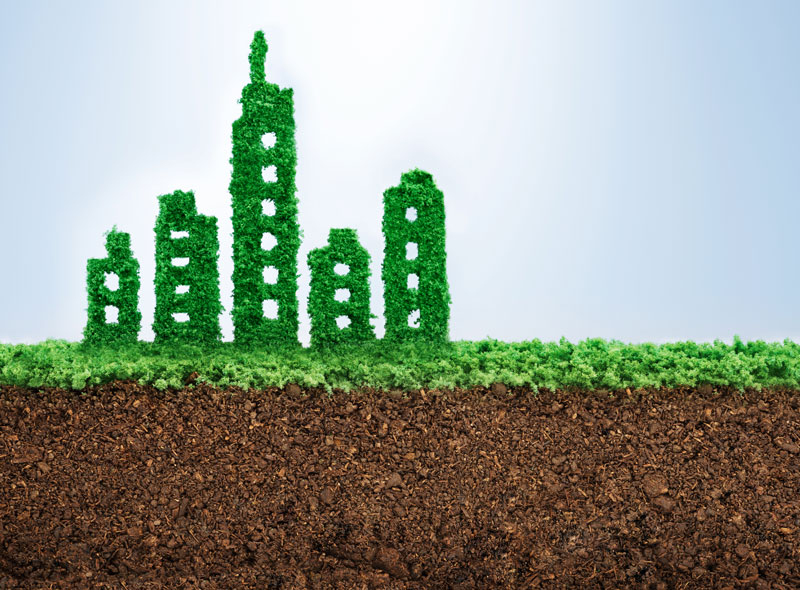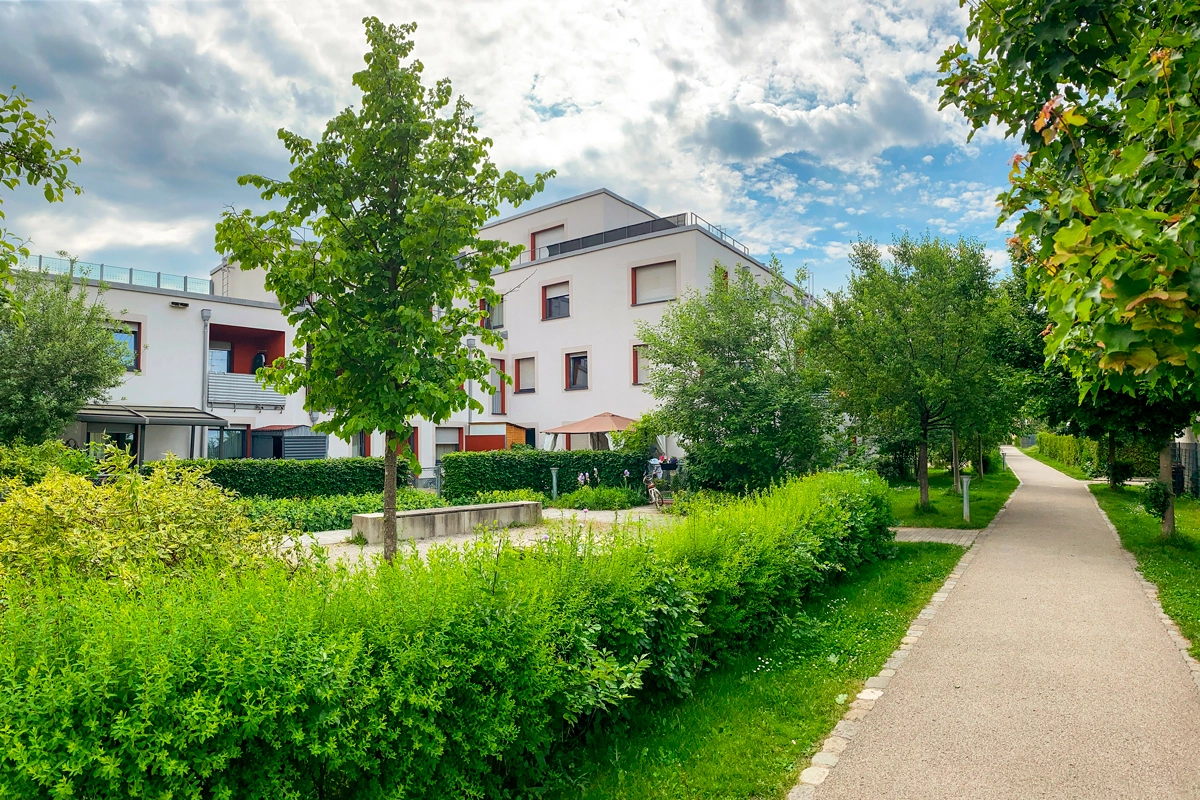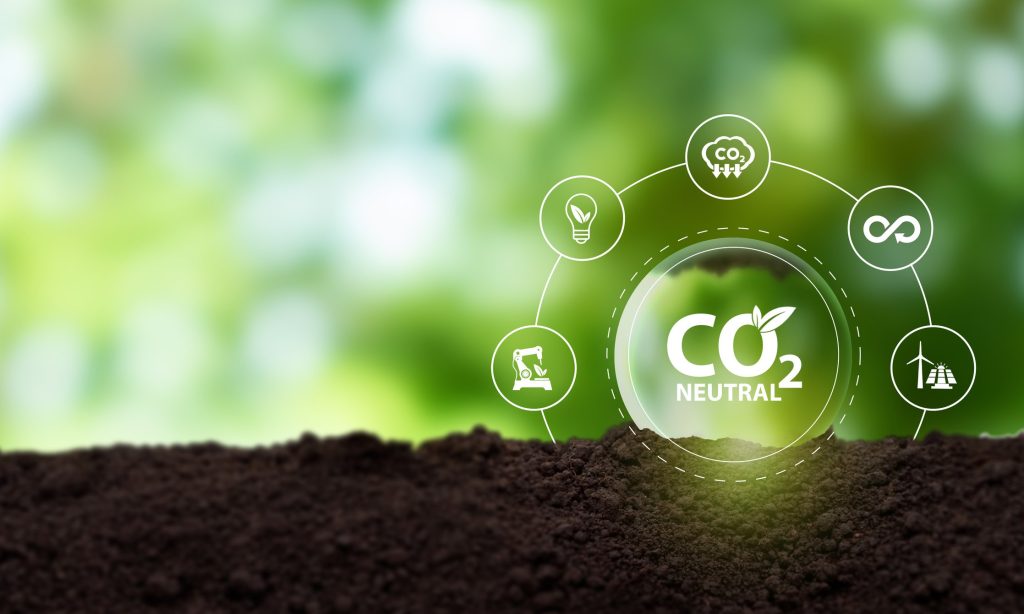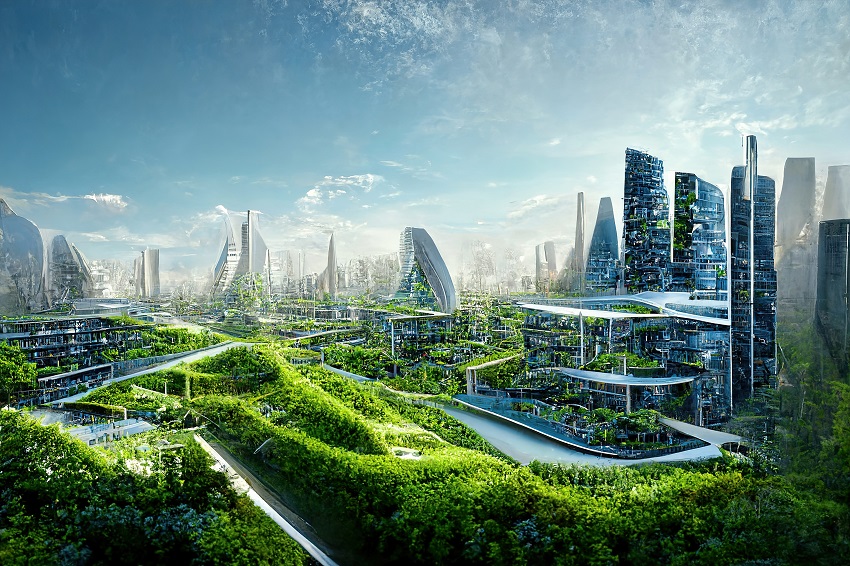Sustainable real estate focuses on eco-friendly building practices that enhance energy efficiency and reduce environmental impact. Green building trends include the use of renewable energy, sustainable materials, and smart technologies.
In recent years, sustainable real estate has gained traction as a viable solution to environmental challenges. Cities like Austin, Texas, are at the forefront of this movement, showcasing innovative green building practices. These trends prioritize energy efficiency, waste reduction, and the use of sustainable materials.
Not only do green buildings contribute to a healthier planet, but they also offer significant financial benefits, such as reduced operating costs and increased property values. As more homeowners and investors recognize these advantages, the demand for sustainable properties continues to rise, shaping the future of the real estate market.

Credit: www.mpirealestate.com
The Rise Of Sustainable Real Estate
The demand for sustainable real estate is growing rapidly. People want homes that are eco-friendly. This trend reflects a greater awareness of environmental issues. Sustainable real estate focuses on reducing carbon footprints and promoting energy efficiency.
With increasing climate concerns, investors seek green alternatives. Sustainable buildings use resources wisely and create healthier living spaces. This shift is beneficial for both the planet and property owners.
Driving Forces Behind Eco-friendly Investments
Several factors drive eco-friendly investments in real estate:
- Government Regulations: Stricter environmental laws encourage green building.
- Consumer Demand: More buyers prefer sustainable homes.
- Energy Efficiency: Lower utility bills attract investors.
- Corporate Responsibility: Companies aim to enhance their green image.
- Technological Advancements: Innovative materials and methods improve sustainability.
Comparing Traditional Vs. Green Real Estate
| Aspect | Traditional Real Estate | Green Real Estate |
|---|---|---|
| Environmental Impact | Higher carbon footprint | Lower carbon footprint |
| Energy Efficiency | Standard energy use | Optimized energy consumption |
| Health Benefits | Potential health risks | Improved indoor air quality |
| Long-term Costs | Higher maintenance costs | Lower operating costs |
| Market Value | Variable | Higher resale value |
Investing in green real estate offers numerous advantages. Eco-friendly buildings attract more buyers and tenants. They also contribute to a healthier planet.
Credit: www.dmarealtors.com
Financial Impacts Of Green Buildings
Green buildings offer significant financial benefits. Their design and construction lead to lower operating costs. Eco-friendly features increase property value. Investors see these buildings as strong assets. The financial impacts of green buildings are clear and positive.
Cost-benefit Analysis Of Eco-friendly Construction
Understanding the cost-benefit analysis is crucial for decision-makers. Initial costs may be higher for green buildings. Yet, the long-term savings often outweigh these expenses. Here are key factors:
- Initial Investment: Higher upfront costs for sustainable materials.
- Tax Incentives: Government programs often offer tax breaks.
- Financing Options: Green loans provide favorable terms.
- Resale Value: Green buildings typically sell for more.
The following table summarizes the costs and benefits:
| Aspect | Cost | Benefit |
|---|---|---|
| Initial Construction | Higher upfront costs | Increased property value |
| Utilities | Variable | Lower monthly bills |
| Maintenance | Moderate | Reduced long-term costs |
Long-term Savings: Energy And Water Efficiency
Energy and water efficiency lead to substantial long-term savings. Eco-friendly buildings use less energy and water. This reduces utility bills significantly.
- Energy Savings: Up to 30% savings on energy costs.
- Water Efficiency: Reduction in water usage by 20-50%.
- Maintenance Costs: Lower due to durable materials.
Consider the following benefits:
- Lower operating costs improve cash flow.
- Increased tenant satisfaction leads to fewer vacancies.
- Longer lifespan for building systems reduces replacement costs.
Investing in green buildings is a wise financial decision. The savings and benefits create a compelling case for sustainability.
Environmental Benefits Of Sustainable Properties
Sustainable properties offer significant environmental benefits. They play a crucial role in protecting our planet. By embracing green building practices, we reduce harmful impacts on nature. Here, we explore two key areas: carbon footprint reduction and promoting biodiversity.
Carbon Footprint Reduction And Climate Change
Reducing the carbon footprint is vital for combating climate change. Sustainable properties achieve this through various strategies:
- Energy Efficiency: Using high-quality insulation and energy-efficient appliances lowers energy consumption.
- Renewable Energy: Installing solar panels or wind turbines generates clean energy.
- Smart Design: Designing buildings to maximize natural light reduces reliance on artificial lighting.
These methods contribute to lower greenhouse gas emissions. A table below summarizes the impact of sustainable practices on carbon emissions:
| Practice | Carbon Emissions Reduction |
|---|---|
| Energy-efficient appliances | Up to 30% |
| Solar energy systems | Up to 50% |
| Smart building design | Up to 20% |
Every reduction in emissions helps mitigate climate change. Sustainable properties directly contribute to a healthier environment.
Promoting Biodiversity And Natural Resource Conservation
Sustainable properties also promote biodiversity. They protect local ecosystems and conserve natural resources. Here are some ways they do this:
- Native Landscaping: Using local plants fosters habitats for wildlife.
- Water Conservation: Implementing rain gardens reduces runoff and protects water quality.
- Material Sourcing: Choosing sustainable materials minimizes resource depletion.
These practices enhance biodiversity. They ensure a balanced ecosystem. Sustainable properties play a significant role in conserving our planet’s resources.
Technological Innovations In Green Real Estate
Technological innovations are transforming the landscape of green real estate. These advancements enhance energy efficiency and promote sustainability. Smart homes, renewable energy, and sustainable materials play crucial roles in this evolution. Let’s dive into these innovations.
Smart Homes And Iot Integration
Smart homes use technology to improve comfort and efficiency. The Internet of Things (IoT) connects devices, allowing homeowners to manage their energy usage effectively.
- Smart Thermostats: Adjust temperature based on occupancy.
- Smart Lighting: Automate lights to save energy.
- Smart Appliances: Optimize energy consumption during off-peak hours.
These features lead to significant energy savings. Homeowners enjoy lower bills and a reduced carbon footprint. Smart homes also enhance overall living comfort.
Renewable Energy Sources And Sustainable Materials
Renewable energy sources are essential for sustainable real estate. Solar panels and wind turbines provide clean energy. This reduces reliance on fossil fuels.
| Energy Source | Benefit |
|---|---|
| Solar Panels | Generate electricity from sunlight. |
| Wind Turbines | Convert wind energy into electricity. |
Sustainable materials also play a crucial role. Eco-friendly options include:
- Recycled Materials: Reduce waste and lower environmental impact.
- Bamboo: A fast-growing, renewable resource.
- Low-VOC Paints: Improve indoor air quality.
These innovations not only benefit the environment but also enhance property values. Homeowners gain long-term financial benefits.
Market Trends And Consumer Demand
The demand for sustainable real estate is rapidly growing. More buyers want homes that are eco-friendly and energy-efficient. This shift stems from a heightened awareness of climate change and environmental issues. Consumers are seeking properties that align with their values.
Growing Popularity Of Eco-friendly Homes
Eco-friendly homes are becoming a popular choice among buyers. Many people prefer homes that minimize energy use and reduce waste. Features that attract buyers include:
- Solar panels for renewable energy.
- Energy-efficient appliances that lower utility bills.
- Smart home technology for better energy management.
- Low-VOC materials for healthier indoor air quality.
These features not only appeal to environmentally-conscious buyers but also promote sustainable living. The trend toward green homes is expected to continue as more people prioritize sustainability.
Impact On Property Value And Marketability
Eco-friendly homes often have higher property values. Studies show that green certifications can increase a home’s marketability. Buyers are willing to pay more for sustainable features.
| Feature | Impact on Value |
|---|---|
| Solar Panels | +15% Value Increase |
| Energy-Efficient Windows | +10% Value Increase |
| Water-Saving Fixtures | +5% Value Increase |
Green homes are not just trendy; they are also a smart investment. As the market evolves, properties with sustainable features will likely see greater demand.
Health And Wellness Benefits
Sustainable real estate offers significant health and wellness benefits. Green buildings are designed to promote a healthier lifestyle. They use materials and practices that enhance the quality of life for residents. This section highlights how these spaces create healthier environments.
Creating Healthier Living Environments
Green buildings prioritize natural light and fresh air. They often include:
- Large windows for sunlight exposure
- Efficient ventilation systems
- Access to green spaces
These features lead to improved air quality. They reduce harmful pollutants indoors. As a result, residents experience fewer allergies and respiratory issues.
Psychological And Physical Advantages
Living in a sustainable building can enhance mental well-being. Research shows that green spaces boost mood. Here are some psychological advantages:
- Reduced stress levels
- Improved focus and productivity
- Increased feelings of happiness
Physical health benefits are also notable. Green buildings encourage:
- Regular physical activity through walkable designs
- Healthier eating habits with community gardens
- Access to fitness facilities
These factors contribute to a healthier lifestyle overall. Sustainable real estate supports both the body and mind.
Challenges And Solutions In Sustainable Construction
Sustainable construction faces distinct challenges. Understanding these obstacles is crucial. Solutions exist to make green building feasible and effective.
Navigating Higher Initial Costs
Many perceive higher initial costs as a barrier. Sustainable materials and technologies often come with a premium. This can deter developers and homeowners.
Long-term savings can outweigh initial expenses. Here are some key points:
- Energy-efficient buildings reduce utility bills.
- Government incentives can offset costs.
- Increased property value is common with green homes.
Investing in sustainability pays off over time. The benefits often include:
| Benefit | Description |
|---|---|
| Lower Operating Costs | Energy savings lead to reduced utility bills. |
| Tax Incentives | Government support encourages green investments. |
| Increased Resale Value | Eco-friendly homes often sell for more. |
Overcoming Regulatory And Technical Hurdles
Regulations can complicate sustainable construction. Building codes may not support green technologies. Navigating these rules requires effort.
Technical challenges also arise. Some builders lack experience with eco-friendly practices. Here are ways to overcome these hurdles:
- Engage with local authorities early in the process.
- Invest in training for construction teams.
- Adopt innovative technologies that comply with regulations.
Collaboration is essential. Working with experts can simplify the process. This approach leads to successful sustainable projects.
The Future Of Sustainable Real Estate
The future of sustainable real estate looks bright and promising. Innovations are driving change. New policies and global trends shape this industry. Property owners and developers focus on eco-friendly practices. The benefits of green buildings are too significant to ignore. Let’s dive into the upcoming innovations and global trends influencing sustainable real estate.
Innovations On The Horizon
Technology plays a vital role in the evolution of sustainable real estate. Here are some key innovations to watch:
- Smart Building Technologies: These include energy management systems and IoT devices.
- Biophilic Design: Incorporating nature into building design enhances well-being.
- 3D Printing: Reduces waste and speeds up construction processes.
- Renewable Energy Integration: Solar panels and wind turbines become standard.
- Green Materials: Recycled and sustainable materials gain popularity.
Each innovation contributes to reducing the carbon footprint. They create healthier living spaces. This benefits both residents and the environment.
Policy Impacts And Global Trends
Government policies are crucial in promoting sustainable practices. Here are some impactful trends:
| Trend | Description |
|---|---|
| Building Codes | Stricter codes require energy-efficient designs. |
| Incentives | Tax credits for green building certifications. |
| Global Agreements | International efforts to reduce emissions. |
These policies create a framework for sustainable development. They encourage the adoption of green building practices worldwide.
Investors and buyers increasingly prefer sustainable properties. This shift reflects a growing awareness of environmental issues. The future of sustainable real estate is not just a trend. It is a necessary evolution.
Frequently Asked Questions
What Is The Trend For Green Buildings?
The trend for green buildings focuses on sustainability, energy efficiency, and reduced carbon footprints. Developers prioritize renewable materials and smart technologies. This shift enhances occupant health and boosts property values. Investors increasingly seek eco-friendly options, driving demand for innovative, sustainable construction practices in the real estate market.
What Are The Benefits Of Sustainable Housing?
Sustainable housing offers numerous benefits. It increases energy and water efficiency, resulting in lower utility costs. These homes reduce environmental impact and enhance property value. They also promote healthier living environments, contributing to overall well-being. Investing in sustainable housing supports a greener future for everyone.
What Is A Major Benefit For A Company Of Building A Green Building?
A major benefit of building a green building is reduced operational costs. These structures lower energy and water usage, leading to significant savings for companies. Additionally, green buildings enhance employee productivity and attract eco-conscious clients, boosting overall company reputation.
What Are Green Buildings For Sustainable Future?
Green buildings promote sustainability by minimizing environmental impact. They use energy-efficient designs, renewable materials, and reduce waste. These structures enhance occupant health and comfort while lowering operating costs. Overall, green buildings contribute to a sustainable future by addressing climate change and conserving resources.
Conclusion
Embracing sustainable real estate offers numerous advantages. Green building trends not only enhance property value but also promote healthier living environments. By investing in eco-friendly practices, homeowners and developers contribute to a more sustainable future. Prioritizing these initiatives leads to long-term savings and a positive impact on our planet.
It’s time to act.


